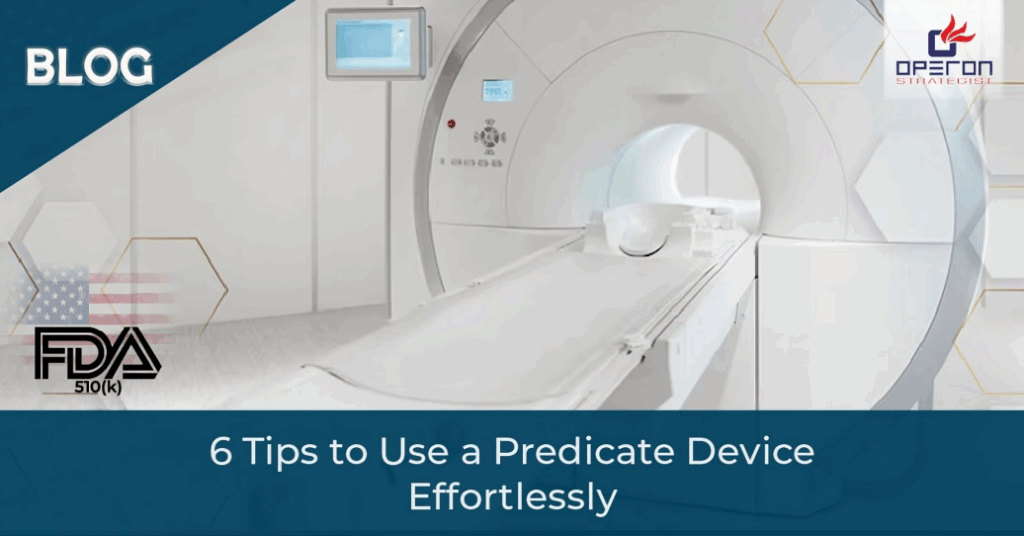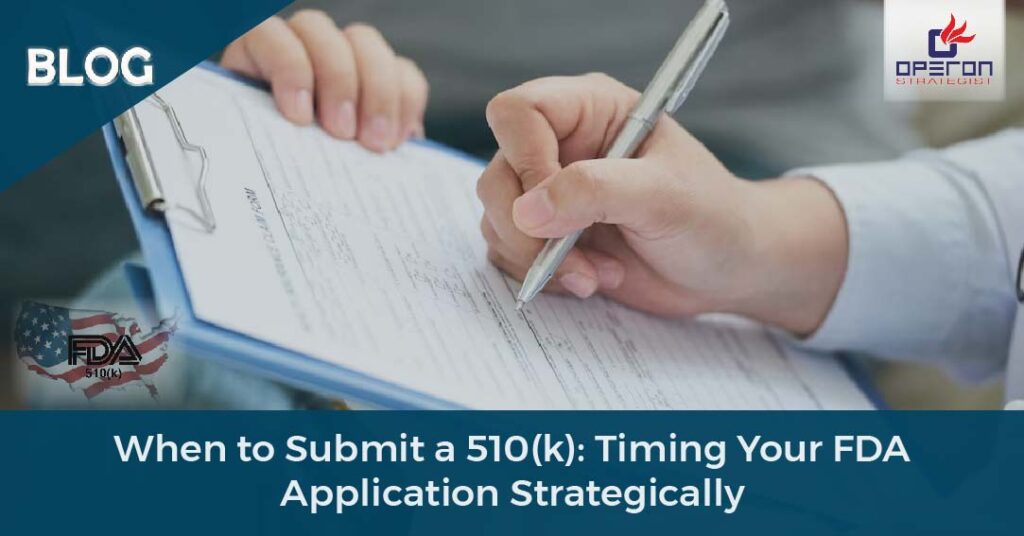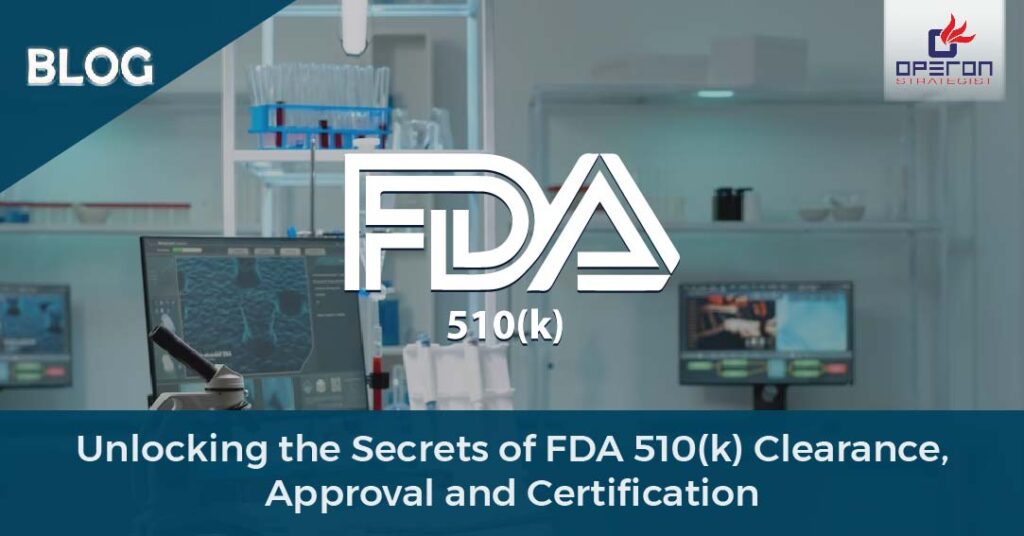
For medical device manufacturers in the USA, securing FDA 510(k) clearance is often the most efficient way to enter the market. A key component of this process is selecting and justifying a predicate device—a previously approved device that your product can demonstrate substantial equivalence to.
Understanding how to effectively use a predicate device is essential. Done correctly, it can streamline your submission, shorten your time to market, and reduce regulatory costs. However, using a predicate device is more than just finding a similar product. It requires strategic planning, documentation, and regulatory expertise.
What is a Predicate Device?
A predicate device is a legally marketed device in the United States that serves as a benchmark for a new device seeking FDA 510(k) clearance. The FDA (US Food And Drug Administration) requires the new device to be “substantially equivalent” in terms of intended use and technological characteristics to the predicate device.
The use of a predicate device is a core element of the FDA’s 510(k) process, and its correct application can make or break your submission.
Tip 1: Select a Predicate Device with Recent FDA Clearance
Experience tells us that using a device cleared within the last 5–10 years provides a stronger basis for equivalence. Older devices may have outdated technology or may not reflect current FDA expectations, leading to increased scrutiny.
By choosing a recently cleared predicate, you align your device with contemporary safety and performance benchmarks, increasing your chances of a smoother 510(k) process.
Tool Tip: Use the FDA 510(k) database to find similar devices and their clearance dates.
Tip 2: Ensure an Exact Match in Intended Use and Indications
Your device must have the same intended use and indications for use as the predicate device. Even slight changes in wording could result in your device being deemed not substantially equivalent (NSE).
Our regulatory experts advise conducting a side-by-side comparison of indications from the FDA 510(k) summaries and ensuring your submission language is either identical or more specific—but never broader.
Documentation Strategy: Use structured comparison tables in your submission to demonstrate exact matches.
Tip 3: Analyze Technological Differences and Provide Justification
Substantial equivalence does not mean your device must be identical. However, if there are differences in materials, design, energy source, or performance characteristics, you must prove these do not raise new safety or efficacy concerns.
Expertise in regulatory science is crucial here. At Operon Strategist, we support our clients in developing scientific justifications and test protocols to address these gaps.
Real-World Example: A client used a different material for the catheter tube. We helped them justify this with biocompatibility testing and literature references, securing a successful 510(k).
Tip 4: Use Multiple Predicate Devices When Necessary
If no single predicate covers all aspects of your device, you can use a primary predicate for the intended use and reference predicates for specific technological features.
This is especially useful for combination devices or innovative designs that draw on more than one existing product.
Authoritative Insight: The FDA accepts multiple predicates under the “Split Predicate” rule only when used correctly. Make sure the primary predicate addresses the intended use to avoid classification issues.
Tip 5: Utilize FDA Guidance Documents and Flowcharts
The FDA has published valuable guidance documents and decision-making tools to help manufacturers assess substantial equivalence.
These include:
- The 510(k) Program Guidance
- FDA’s Substantial Equivalence Decision Flowchart
- Refuse to Accept (RTA) Policy
These documents not only guide formatting but help reduce delays and rejections. Trustworthy consultants rely heavily on these tools to align every element of your submission with FDA expectations.
Trusted Resource: Familiarize yourself with the FDA Substantial Equivalence Guidance before drafting your submission.
Tip 6: Collaborate with a Medical Device Regulatory Consulting Expert
Using a predicate device seems simple on paper, but in reality, it demands in-depth knowledge of Medical device classification, regulatory language, and FDA review standards.
This is where working with a medical device regulatory consulting partner adds immense value. At Operon Strategist, we’ve helped hundreds of clients identify the right predicate, justify substantial equivalence, and prepare 510(k) submissions that get results.
Client Experience Highlight: A USA-based orthopedic startup was struggling to justify their design differences with the predicate. Our team restructured their comparative analysis and test plan—leading to clearance within 90 days.
Get Expert 510(k) Help Today
Why Choose Operon Strategist for Predicate Device & 510(k) Consulting?
- Experience: With over 15 years in the medical device regulatory industry, we understand the nuances of predicate selection, comparison, and submission requirements.
- Expertise: Our consultants are trained biomedical engineers, regulatory specialists, and former industry insiders. We speak the FDA’s language and ensure your documentation meets their highest standards.
- Authoritativeness: Operon Strategist is a trusted partner for regulatory consulting in the USA and globally. We’ve successfully handled 510(k) submissions for Class I, II, and III devices across multiple therapeutic areas.
- Trustworthiness: Transparency, confidentiality, and compliance are at the core of our services. We don’t just provide advice—we deliver submission-ready, audit-proof documentation that gets approvals.
Our Services Include:
- Predicate Device Identification
- Substantial Equivalence Comparison
- FDA 510(k) Compilation & Submission
- Gap Analysis & RTA Checklist Review
- Post-submission FDA Query Support
Ready to Accelerate Your 510(k) Submission?
Let us help you identify the right predicate device, streamline your submission, and reduce your time to market. Speak to our regulatory experts today!


